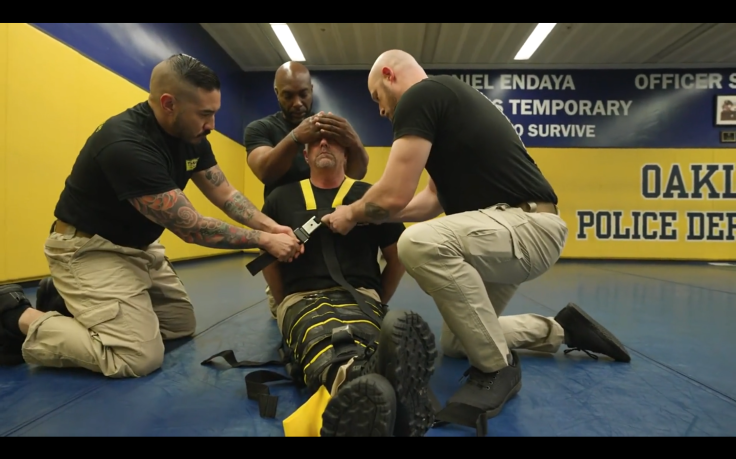
U.S. Immigration and Customs Enforcement (ICE) is facing mounting criticism after an investigation found that the agency has used full-body restraint devices known as "the WRAP" to immobilize deportees during long international flights — sometimes for up to 16 hours — despite internal warnings that the practice risks injury, trauma, and potential violations of federal standards.
The AP identified multiple instances in which immigrants were bound hand and foot, then strapped into the black-and-yellow WRAP suit — which some officers call "the burrito" — for deportations to Africa and Latin America. Detainees described being confined so tightly that they could not move their limbs or eat.
One Nigerian man told the outlet that ICE officers "bundled me and my colleagues, tied us up in a straitjacket," before flying them to Ghana, even though none of them was from there. "It was just like a kidnapping," he said. Another deportee told the AP, "No one should be put into a WRAP. I don't even think they strap animals like that."
According to the AP's review, ICE began using the WRAP in 2015 and has spent at least $268,000 on the devices, most of it during the two Trump administrations. The Department of Homeland Security's own Office for Civil Rights and Civil Liberties raised concerns in a 2023 report, warning of "a lack of policy and training" governing the WRAP's use and citing "serious concerns about ICE's continued use of the device."
That same report referenced a dozen deaths linked to local law enforcement agencies that used the WRAP, with autopsies citing "restraint" as a contributing factor.
The WRAP's manufacturer, Safe Restraints Inc., says the device was designed for police responding to violent or self-harming individuals and was never intended for compliant detainees. "If someone is not being violent and simply protesting verbally, putting them in the WRAP could be improper use," company CEO Charles Hammond told the AP.
ICE has refused to release records of how often the WRAP has been used or the criteria for deploying it. DHS spokesperson Tricia McLaughlin said in a statement that restraints are "long-standing, standard ICE protocol" and that current practices "align with established legal standards."
Advocates and attorneys have condemned the practice as dehumanizing. "This should be a last resort type of restraint after they've already tried other things," said Fatma Marouf, a law professor at Texas A&M University who has sued ICE over the WRAP. "Just being bound up like that can inflict a lot of psychological harm."
In one pending federal lawsuit, five West African men allege ICE used the WRAP to punish them for asking to contact lawyers or refusing deportation orders. One man told the AP that he spent nearly an entire 16-hour flight in the device. Another said he sustained a concussion and a dislocated jaw. "It was the most painful thing I've been through," he said. "Forget the assault, forget the broken jaw. Just the WRAP itself was hurtful."
The AP's investigation found that ICE continues to use the device despite these allegations — and despite its own civil rights office warning that, without reforms, its deployment "raises serious human rights concerns."
© 2025 Latin Times. All rights reserved. Do not reproduce without permission.






